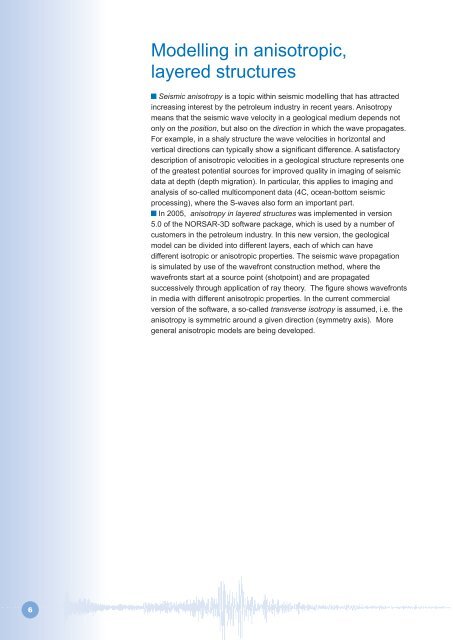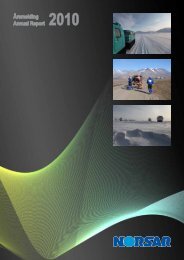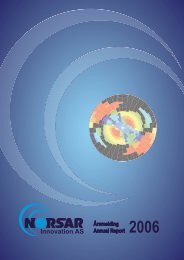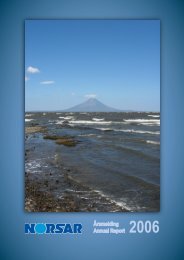Publications - Norsar
Publications - Norsar
Publications - Norsar
Create successful ePaper yourself
Turn your PDF publications into a flip-book with our unique Google optimized e-Paper software.
Modelling in anisotropic,<br />
layered structures<br />
Seismic anisotropy is a topic within seismic modelling that has attracted<br />
increasing interest by the petroleum industry in recent years. Anisotropy<br />
means that the seismic wave velocity in a geological medium depends not<br />
only on the position, but also on the direction in which the wave propagates.<br />
For example, in a shaly structure the wave velocities in horizontal and<br />
vertical directions can typically show a significant difference. A satisfactory<br />
description of anisotropic velocities in a geological structure represents one<br />
of the greatest potential sources for improved quality in imaging of seismic<br />
data at depth (depth migration). In particular, this applies to imaging and<br />
analysis of so-called multicomponent data (4C, ocean-bottom seismic<br />
processing), where the S-waves also form an important part.<br />
In 2005, anisotropy in layered structures was implemented in version<br />
5.0 of the NORSAR-3D software package, which is used by a number of<br />
customers in the petroleum industry. In this new version, the geological<br />
model can be divided into different layers, each of which can have<br />
different isotropic or anisotropic properties. The seismic wave propagation<br />
is simulated by use of the wavefront construction method, where the<br />
wavefronts start at a source point (shotpoint) and are propagated<br />
successively through application of ray theory. The figure shows wavefronts<br />
in media with different anisotropic properties. In the current commercial<br />
version of the software, a so-called transverse isotropy is assumed, i.e. the<br />
anisotropy is symmetric around a given direction (symmetry axis). More<br />
general anisotropic models are being developed.











